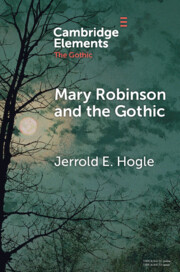Element contents
Mary Robinson and the Gothic
Published online by Cambridge University Press: 29 March 2023
Summary
Keywords
Information
- Type
- Element
- Information
- Series: Elements in the GothicOnline ISBN: 9781009160889Publisher: Cambridge University PressPrint publication: 27 April 2023
Bibliography
Accessibility standard: Unknown
Why this information is here
This section outlines the accessibility features of this content - including support for screen readers, full keyboard navigation and high-contrast display options. This may not be relevant for you.Accessibility Information
- 11
- Cited by
